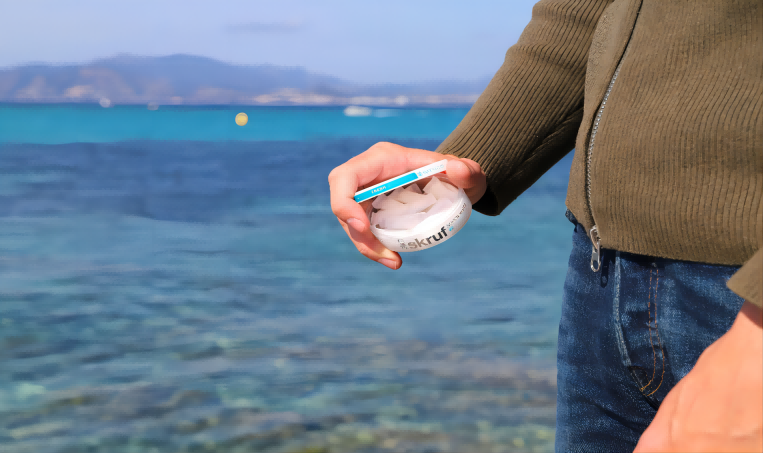Nicotine Pouches: A Regulatory Patchwork Across the Globe

Nicotine pouches are discreet, spit-free, and rapidly gaining popularity as a “healthier” alternative to cigarettes. But beneath their sleek packaging lies a complex and evolving regulatory landscape. In less than two decades, these tiny pouches have transformed from a niche product into a global phenomenon, sparking a wide range of regulatory responses from governments worldwide. From the strict tobacco laws of Scandinavia to the less stringent regulations in other regions, the rules governing nicotine pouches are as diverse as the countries themselves. This diversity presents both challenges and opportunities for manufacturers and consumers alike. In this article, we’ll explore this patchwork of laws, examining how different nations are grappling with this new nicotine frontier. We’ll uncover the cultural, economic, and political forces shaping these regulations, and ask the crucial question: can we create a harmonized global framework for nicotine pouches that balances public health concerns with consumer choice and market innovation? Sources: European Commission – Tobacco Products Directive, WHO Report on the Global Tobacco Epidemic) Nicotine Pouches: A Diverse Regulatory Landscape So, what exactly are nicotine pouches in the eyes of the law? The answer, it turns out, depends entirely on where you’re standing. In some countries, like Sweden and Norway, these pouches are regulated similarly to traditional tobacco products, emphasizing strict age restrictions, marketing limitations, and health warnings. This approach aims to ensure a high level of consumer protection and consistent regulatory oversight. But cross a few borders, and you might find nicotine pouches nestled on supermarket shelves next to chewing gum and candy bars. In these places, they’re treated as general consumer goods, with less stringent regulatory measures. This approach often aims to facilitate easier market entry for innovative products, providing consumers with a wider range of choices. And then there are the countries that see nicotine pouches as a potential tool for smoking cessation. They regulate them as medicinal products, subject to rigorous testing and approval processes akin to pharmaceuticals. This approach prioritizes health benefits and scientific validation, ensuring that products meet high safety and efficacy standards. These varied classifications reflect the unique cultural, economic, and health priorities of each region. The absence of a unified global standard poses challenges for international brands, but it also allows for a diversity of approaches that can be tailored to the specific needs and preferences of each country. Navigating the Nicotine Pouch Landscape: A Global Regulatory Tour The regulatory landscape for nicotine pouches is as diverse as the countries where they’re sold. Every country has developed its own strategy, striking a balance between market entry and consumer safety, while also considering specific public health concerns. In Sweden and Norway, nicotine pouches face stringent regulations similar to traditional tobacco products, with comprehensive measures like mandatory health warnings, age restrictions, and marketing limitations. This approach prioritizes public health and aims to minimize potential risks associated with nicotine use. The United Kingdom also regulates nicotine pouches under existing tobacco laws, ensuring they meet strict safety and marketing standards. This approach maintains consumer safety while allowing for market access and innovation. Germany takes a unique approach, classifying nicotine pouches under food safety laws due to their nicotine content. This approach ensures rigorous regulation and high consumer safety standards, providing an alternative framework for regulating these products. In other countries, like Australia, nicotine pouches are regulated as therapeutic goods, requiring medical prescriptions for purchase. This approach emphasizes the potential for nicotine pouches to be used as a smoking cessation aid, highlighting their potential benefits in harm reduction strategies. This global tour of regulations demonstrates the complexity and diversity of approaches to nicotine pouches. It also highlights the need for continued dialogue and collaboration among policymakers, industry leaders, and public health experts to develop effective and appropriate regulations that protect consumers while allowing for innovation and market growth. Emerging Nicotine Pouch Markets: Opportunities and Challenges In some markets, nicotine pouches are sold without specific regulations, creating both opportunities and challenges. These countries often lack tailored legal frameworks for nicotine products, resulting in a market environment where consumer protection and product safety standards may vary. However, this regulatory landscape also presents a unique opportunity for innovation and market growth. Companies operating in these markets can adopt voluntary standards and best practices to ensure product safety and quality, paving the way for potential future regulatory developments. The absence of specific regulations in these markets highlights the need for industry self-regulation and responsibility. By prioritizing consumer safety and transparency, companies can build trust and lay the groundwork for a sustainable and responsible nicotine pouch market. Source: Euromonitor International – Market Reports Balancing Public Health and Consumer Choice: Key Policy Considerations When it comes to nicotine pouches, governments aren’t just deciding whether to allow or ban them. They’re also considering how these products are sold, marketed, and consumed. This multifaceted approach aims to strike a balance between protecting public health and respecting consumer choice. One of the biggest concerns is keeping nicotine pouches out of the hands of kids. Most countries have taken a page from the tobacco control playbook, imposing age restrictions and ID checks. Some go even further, banning online sales or restricting flavors and packaging that might appeal to young people. Then there’s the question of where you can buy these pouches. In some places, they’re confined to pharmacies or specialty shops, while in others, they’re as ubiquitous as chewing gum. Some countries even ban vending machine sales or limit the number of pouches you can buy at one time. It’s all about finding the right balance between accessibility and control. And let’s not forget those health warnings. Just like cigarettes, nicotine pouches are often required to carry labels detailing the potential risks of nicotine addiction and other health problems. Some countries even require graphic images. This approach aims to ensure that consumers are well-informed about the potential risks associated with nicotine use. But perhaps the most contentious policy domain is advertising and promotion. Can nicotine pouch companies sponsor sports teams or music festivals? Can they run
